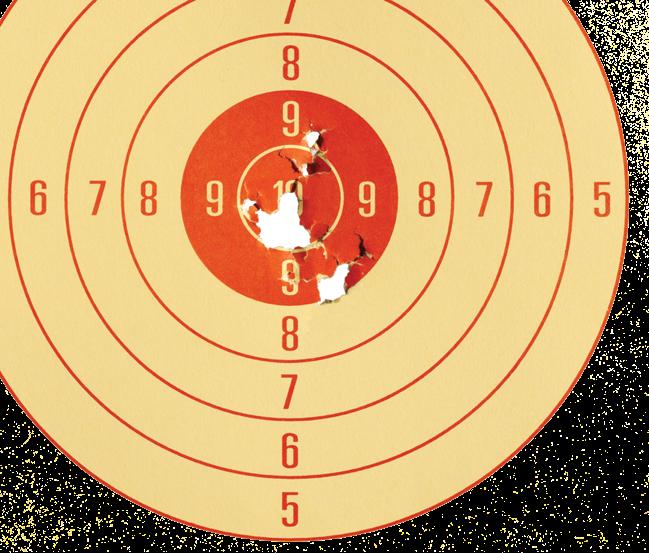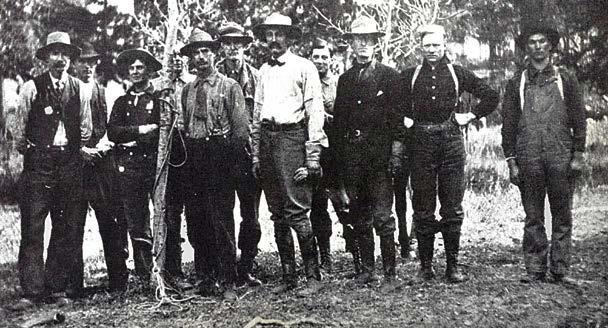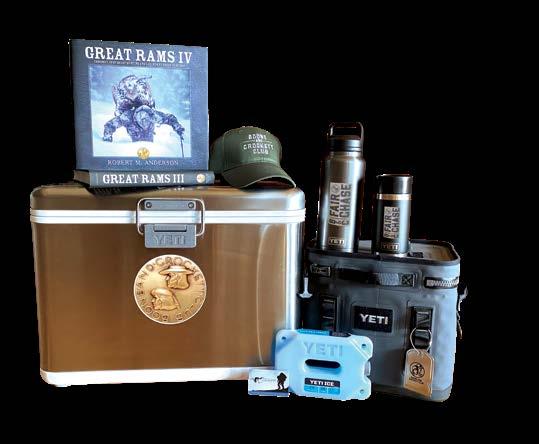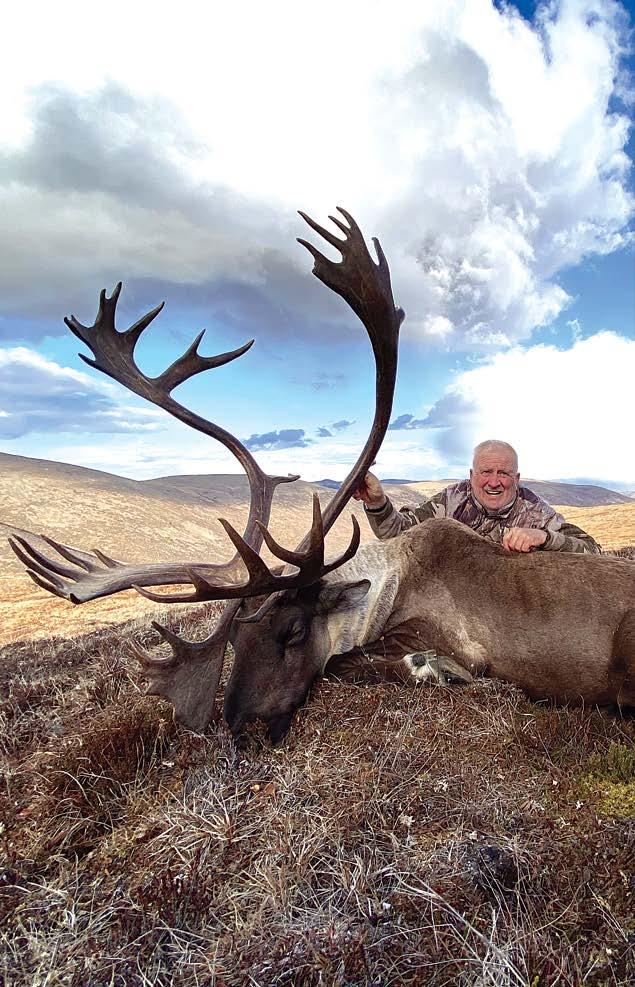
6 minute read
THE VALUE OF ETHICAL HUNTING THROUGH STORYTELLING
THE VALUE OF ETHICAL HUNTING
THROUGH Storytelling
Advertisement
B&C'S TENETS OF FAIR CHASE
Hunter ethics. Fundamental to all hunting is the concept of conservation of natural resources. Hunting in today’s world involves the regulated harvest of individual animals in a manner that conserves, protects, and perpetuates the hunted population. The hunter engages in a one-toone relationship with the quarry, and should be guided by a hierarchy of hunting ethics including the following tenets:
1. Obey all applicable laws and regulations.
2. Respect the customs of the locale where the hunting occurs.
5. Behave in a way that will bring no dishonor to the hunter, and show no disrespect for the hunted or the environment. LETTING THEM GO
For many years in the Chihuahuan Desert, I hunted desert mule deer southeast of Marfa, Texas. When my son, Clay was old enough to tag along with me, I was eager to have him with me on each day of the hunt. We primarily hunted on foot and spent much time glassing the landscape for a trophy buck. One particular morning, we hunted hard but had seen few deer. Then we spotted what looked like a 2½-year-old four-by-four roughly a half-mile away. The buck was standing above a dry, rocky, and washed out creek bed. I suggest-ed to Clay that it might be fun to drop down in the creek bed and try to get as close as possible to this young buck without spooking him. I told Clay that I had no intention of shooting this young buck, but it could be a fun stalk. He was thrilled with the idea. We dropped down into the wash. Carefully and slowly we closed the distance to the buck. On at least one occasion we had to slither under a barbed wire cross fence. Occasion-ally, I raised up to get a glimpse of the motionless buck to ascertain our proximity to him. When I determined he was directly above us, Clay and I stood up and stepped out of the dry wash about 30 yards from him. I pointed an outstretched finger at him and said, “Bang!” With that, the buck turned and hightailed it out of sight. I explained to Clay that if you ever want to shoot a trophy buck, you must let them grow to maturity. Hunting is not about making a kill. Rather, hunting should be about enjoying the experience and doing what is right for effective game management. Let those young bucks grow for the benefit of the herd. That message stuck with Clay. Today he is an accomplished big game hunter who will sometimes hunt an entire season without taking a shot. He hunts a lot but does not shoot a lot. To our family, that is what ethical big game hunting is all about. n
Tenet 3: Exercise a personal code of behavior that reflects favorably on one’s abilities and sensibilities as a hunter.
KNOWING YOUR LIMITS
I did not become interested in big game hunting until I married a sheep hunter, and he dedicated an entire summer to teaching me how to shoot his 7mm Sako at a rifle range. By the end of the summer, I was very confident with shots up to about 225 yards, and he arranged a fall elk hunt for me at a friend’s ranch in New Mexico. After several days, we spotted a nice bull at about 160 yards. The bull was grazing, moving slowly through a thick stand of aspen, fir, and brush on the side of hill. With our friend acting as my guide, I waited for a clear shot. The elk finally stopped in a small opening among several aspen trees. I faintly heard the words “take the shot” and slowly squeezed the trigger. The bull dropped instantly. Several minutes later, we carefully made our approach. To our surprise, the only thing left was a blood trail leading up the hillside. We spent the rest of the day tracking the animal, but never recovered him. I was devasted at the outcome, but there was no taking that bullet back. With all my hours at the shooting range, I should have been able to make a clean kill at that yardage. What I later realized is that the dense trees, brush, and hilly landscape had made that shot too risky. It was an easy shot for an experienced hunter, but not for me. No matter what your experience level, you must know your limits. It is what fair chase demands.n

Tenet 4: Attain and maintain the skills necessary to make the kill as certain and quick as possible.
TOO EASY
About three decades ago I was deer hunting in East Texas on land owned by a timber company. I appreciated the invitation to hunt there, although the deer tended to be small by Texas standards, the camp house provided a cook and the camaraderie of the other hunters was welcoming. I was placed in a permanent tree blind facing a quarter-acre food plot, most likely planted with ryegrass. To my right was a logging road, down which I could see at least 200 yards. To my left the road rounded into the forest after about fifty yards. The forest was a pine plantation, with the trees behind me and across the road 20-25 years old and 30 feet tall, whereas those in front of me, surrounding the food plot were maybe 10 years old and 10 to 15 feet high. To my right I saw a young buck literally sauntering down the middle of the logging road. He was a 6 point—3 on each side, and probably a yearling or possibly a 2-year-old. He took his time and seemed oblivious to his surroundings. He walked right into the middle of the food plot in front of me and began grazing on the grass about 30 yards away. Now I'm a meat hunter, and the size or even the presence of antlers is mostly unimportant to me. Venison is venison. But this was just too easy. I'm not a bowhunter, but if I'd had a bow I might have taken a shot. Or if I'd had my muzzle-loader. I was carrying my FN Mauser .30-06 with a
Leupold 3-9x scope. I bought it secondhand in 1959, when I was 14 years old, and it is still my big game rifle. I thought this might be a really nice-looking buck in a year or two, but he would not last long being this dumb. I decided to teach him a lesson, so I purposely shot in the grass right in front of his nose as he was about to bend down to graze again. As expected, he cleared the food plot in one jump and took off through the woods like a rabbit. In my hunting career I've decided some shots were too long, some at running game too chancy, and some, like this one, just too easy. Perhaps one way to judge us as Fair Chase hunters is not by the shots we take, but by the ones we pass up. n
Tenet 3: Exercise a personal code of behavior that reflects favorably on one’s abilities and sensibilities as a hunter. Do you have a short story that highlights the value of ethical hunting and illustrates a tenet of Fair Chase? Send your story to Karlie Slayer at Karlie@Boone-Crockett.org
As part of the course, guests were invited to ask questions and learn as much as they could.

The Theodore Roosevelt Memorial Ranch’s on-site shooting range allows the Club to invite guests like Chris Parish of The Peregrine Fund, who performed a shooting demonstration on lead versus non-lead projectiles.
Trophy Talk pg. 64










